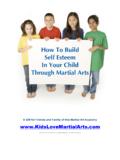Transcription of Exercising with Anxiety and Depression - Exercise …
1 Regular physical activity is good for Anxiety and Depression . It can improve your mood and self - esteem . It will help reduce stress. Regular Exercise also helps you sleep better and have more with Anxiety and DepressionFuse/ThinkstockAnxiety is a deep concern for future events. Many studies show even just one Exercise session can lower Anxiety and make you feel calmer. The effect is similar to meditation or taking medication. Long-term, regular activity lowers Anxiety , especially for people who are very affects about 5 percent of adults in all developed countries. It is a major cause of disability. The disability rate is even higher in those with mild Depression . The main symptom in Depression is fatigue. Fatigue is a low level of physical and mental energy. People with Depression often have other chronic medical issues, like heart disease.
2 Over time, Depression affects how people live. It raises their risk of dying. It also lowers self - esteem and motivation. It can even interfere in relationships. In other words, Depression makes everyday life harder. Research shows that regular moderate or vigorous physical activity improves mental well-being. It also helps with other symptoms of Depression . For example, active people are 45 percent less likely to develop symptoms of Depression . The effects are similar to those after drug the type of Exercise make a difference? Most studies show that moderate to high levels of physical activity reduce symptoms more than lighter levels. Different modes of moderate to high levels of Exercise have similar effects. Longer Exercise sessions are better than a few short ones through the day. We aren t sure about the minimal or best amount of Exercise needed, but we do know that you don t need a high fitness level to get the benefits.
3 Being regularly active is more important than being much Exercise do you need to get the benefits? The most health benefit comes when inactive people become moderately active. Making Exercise a regular part of your life can have a major impact on your health. The key is to choose activities you enjoy. Evidence suggests both aerobic and strength-training Exercise help with Anxiety and Depression . Try to do both. If you are just starting out, do more aerobic Exercise . Over time, add resistance workouts. Doing both types will bring even more benefits for overall health and Started Talk with your health care provider before you start an Exercise program. Ask about any changes to your medications or any concerns in becoming more active. Take all medicines prescribed by your doctor. The main goal is to find activities you enjoy and will do regularly.
4 Choose places that are well known and familiar to you. Avoid situations that raise your Anxiety . Start by Exercising on your own. Begin walking or another form of activity that you can integrate into your daily routine. If your fitness level is low, start with shorter sessions (even 5 to 10 minutes). Over time, build up to 20 to 60 minutes of aerobic activity. Invite others to join you. Exercising together is more fun. It also increases the chance you will continue. Dogs also make great walking partners! Look for programs in your community. You could also contact an appropriately credentialed Exercise professional* to help you. All you really need, though, is a good pair of shoes to get started walking. Use a pedometer or other device to track your progress. Slowly work toward a goal, like maybe 10,000 steps per day.
5 Aerobic Exercise ProgramsThe American College of Sports Medicine and the Centers for Disease Control and Prevention recommend at least 150 minutes per week of moderate-intensity aerobic activity, 75 minutes of vigorous aerobic activity, or a combination of both for adults. They also suggest muscle strengthening twice a week. Follow the FITT principle to design and implement a safe, effective, and enjoyable program. F = frequency, I = intensity, T = time, and T = type. Frequency Be active on most days of the week but at least three to four days. Work up to five days a week. Intensity Exercise at a moderate or vigorous level. Use the talk test to help you monitor. For example, a moderate pace will slightly increase your heart rate and breathing, but you should still be able to carry on a conversation. As you walk faster, you will begin to breathe faster and have difficulty talking.
6 At that point, you ve achieved moderate intensity or somewhat hard. Vigorous Exercise causes a large rise in heart rate and breathing. At this intensity, it would become hard to talk. Most people would rate this as hard to very hard. Time Exercise 30 to 60 minutes per day. You can do it all at once or break it up into a few sessions of at least 10 minutes each. Type Do rhythmic exercises using the large muscle groups. Try brisk walking, cycling, and swimming. Choose activities you enjoy and will do regularly in your new, more active lifestyle. Add variety depending on the day or the season to keep your program more Exercise Cautions If you take medicine, be aware that it might affect your response to Exercise . For example, some antipsychotic medicines can cause dehydration or gait problems. Some antidepressants can cause fatigue, dizziness, and weight gain.
7 Other antidepressants can make you drowsy but won t affect your response to Exercise . If you have been inactive, consider joining a structured, supervised program. This will provide a routine that you will be able to continue. Do not push too hard at the beginning. This may cause soreness and pain, which could make it harder to continue. If you have been inactive for a long time, start with short sessions (10 to 15 minutes). Add five minutes to each session, increasing every two to four weeks. Over time, build up to being active at least 30 to 60 minutes a day on most days of the Exercise ProgramsModerate or vigorous intensity resistance training is important to your program. Resistance training helps you to function better. It also promotes good physical and mental health. You should follow the FITT principle when creating a resistance Exercise program.
8 Frequency Do resistance training at least two days per week. Plan a day of rest between sessions. Intensity Begin at a moderate level. If you can lift a weight 10 to 15 times, you ve achieved moderate intensity. Do more repetitions with less weight to reduce muscle soreness. Pain is no friend to people with Anxiety or Depression . Over time, work up to heavier weight. Time Do two to three sets will all major muscle groups. Type People less familiar with strength exercises should begin with weight machines. As strength improves , add free weights. Don t belong to a gym or health club? No problem. You can do the same exercises at home using lighter weights, resistance bands, or your body weight as the resistance, like push-ups or Exercise Cautions Don t hold your breath when you lift. This can cause large changes in blood pressure.
9 That change increases the risk of passing out or developing abnormal heart rhythms. This is especially so if you also have high blood pressure. If you have joint problems or other health problems, do only one set for all major muscle groups. Start with 10 to 15 repetitions. Build up to 15 to 20 repetitions before you add another set. Remember, you are not training to be a weight lifter. Rather, you are trying to improve your strength and muscle endurance. In addition, your daily life will be less Types of Exercise Poor balance and reduced muscle mass and strength are all independent risk factors for fractures and falling. Fifty percent of older adults have problems with balance. Exercises to improve balance are easy to do and can help a lot. Stand on one foot, stand or walk on a balance board, or walk backwards to improve balance.
10 Reduce Anxiety and the risk of falling with a few simple precautions. Avoid unstable surfaces. Keep your Exercise area free of hazards. Use balance support like a chair, wall, or nearby person. Exercise for flexibility offers general health benefits. Each day you do aerobic or strength activities, take an extra 10 minutes to stretch the major muscle and tendon groups. Each stretch should last 10 to 30 seconds and be repeated 3 to 4 times. Tai chi and yoga are good programs for balance, flexibility, and mobility. They also help with relaxation and a sense of your Exercise program for the most benefit and fewest risks to your health or physical condition. Contact an appropriately credentialed Exercise professional* to work with you and your doctor. They can help you establish realistic goals. Together, you can design a safe, effective, and enjoyable program to meet your needs and more information, visit or e-mail A listing of Exercise professionals can be found at and EIM Credentialed professionals can be found through the ACSM ProFinder ( ).









